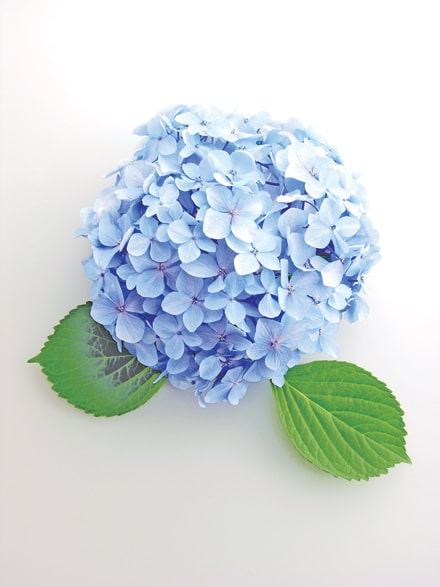Since then, hydrangeas have always been one of my favorite landscape shrubs. They come in several species and varieties with the bigleaf hydrangea the most familiar and commonly planted. Throughout the summer months, they produce attractive, colorful blooms that range from pink to purple and have attractive thick medium to dark green leaves. They can be used as specimen plants, in groupings or in containers. The bigleaf hydrangeas can be divided into two types: The hortensia hydrangeas that have blooms that are snowball shaped, and the flat lacecaps with their blooms in an outer ring of large flowers and a mass of tiny fertile ones on the inside.
Bigleaf hydrangeas are deciduous shrubs. They can reach several feet in height. Hydrangeas should be planted in partial shade. The plants prefer a couple of hours of early morning sun but are unable to tolerate hot, dry sites that receive the full afternoon sun. However, avoid deep shade since it will reduce their production of flowers.
The clay soils are not conducive to healthy growth hydrangeas. The addition of organic matter, such as peat moss, topsoil, or compost, to the soil, will help improve aeration and drainage as well as retain nutrients and water. Dig the hole the depth of the rootball and at least twice as wide. When planting, make sure the crown of the plant is level with the top of the hole and no deeper. Avoid fertilization until the plant is established, around four to eight weeks after transplanting. When the plants begin sprout new leaves in the spring, apply a general purpose fertilizer, such as 10-10-10, around the root zone.
The bigleaf hydrangea has shallow roots and needs supplemental water during dry spells. When the flowers begin to turn green or brown in color, remove them. Prune other shoots as necessary to encourage branching and fullness by August 1st. The new buds will begin forming in late summer for the following year. If the plant has sustained winter injury, prune the dead or damaged branches. This action will encourage more vegetative growth at the expense of flowers, but will be beneficial for the overall health of the plant. Sometimes the plants fail to bloom. The cause is most likely freeze damage, the application of excessive nitrogen fertilizer, or pruning at the wrong time of the year.
The level of aluminum compounds in the plants is the mechanism that determines the flower color. Higher levels of aluminum cause the flowers to be a deep blue. The color is light blue when only minimal quantities are present. If aluminum is absent, then flowers are pink. Soil pH has an indirect impact on flower color. It determines the level of aluminum available for plant absorption. At a pH of 5.0 or lower, aluminum is more soluble and thus the roots can absorb more of it. At a pH of 7.0 or greater, aluminum levels decrease. If you want blue flowers, you can acidify the soil by adding a one-half cup of wettable sulfur per 10 square feet. For pink flowers, apply one cup of dolomitic limestone per 10 square feet to raise the pH. It may take a year or more before color changes are observable.
Like my grandmother’s garden of long ago, hydrangeas can provide your landscape with bountiful color if provided the proper growing conditions. No garden is complete without them.
Timothy Daly is an Agriculture and Natural Resources Agent with Gwinnett County Cooperative Extension. He can be reached at 678-377-4010 or timothy.daly@gwinnettcounty.com.


